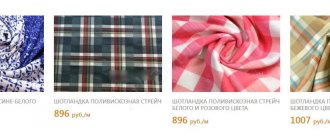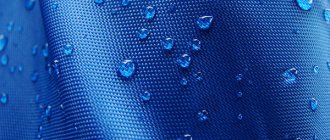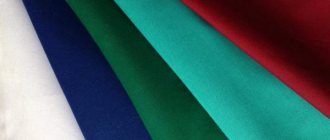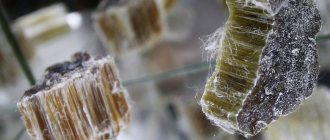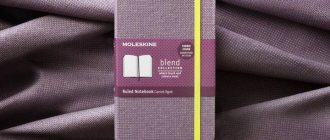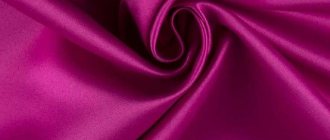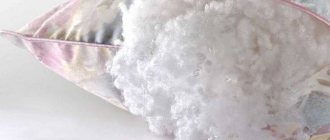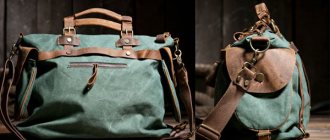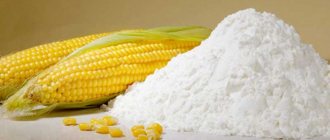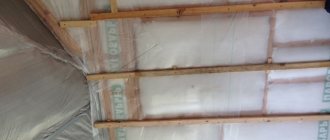Production
It is made from polyacrylonitrile, a product obtained by the polymerization of acrylonitrile in the presence of catalysts.
1. Polyacrylonitrile resin is dissolved in dimethylformamide (a special solvent) when heated. A fiber is formed from the resulting solution.
There are two molding methods:
- dry. The solution passes through the dies of a special spinning machine, at the exit the streams are blown with air (temperature 200 ° C) and harden. In this way, only continuous threads of nitron can be obtained, which in appearance resemble silk;
- wet. After filtration, the resin solution is placed in a tank where air bubbles are removed from it. After this, using pumps, it is fed to the dies and pressed through the holes into a judgment bath with an aqueous solution of dimethylformamide (10-15 ° C). Hardened threads turn out translucent and very fragile. They are then stretched in an aqueous solution to impart strength. Using the wet method, you can obtain both threads and staple fiber, curled in a crimping machine and cut into pieces of a certain (specified) length. It is subsequently processed into yarn. Nitron staple looks almost no different from wool.
2. After the stage of spinning and thermal consolidation with steam, it is necessary to remove the remaining solvent from the fiber, for which it is washed.
3. Then comes the oiling process so that no electrostatic charges arise during further processing.
Read about: rubberized fabric: durable and practical.
Since the fiber has low hygroscopicity and swells slightly in water, it is difficult to dye. It can be dyed in light colors at a temperature of 100 °C using conventional methods using dispersed, vat and basic dyes. Dark and bright colors are dyed at higher temperatures (120 ° C) or auxiliary substances are added to the bath.
Occupational diseases
Intoxications possible in the production of synthetic fibers nitron and nylonSynthetic fiber nitron
Nitron synthetic fiber is produced by polymerization, fiber spinning and finishing. Polymerization is preceded by the production of starting products: acrylic acid nitrile (acrylonitrile) and methyl acrylate. Acrylonitrile is synthesized in three ways: from ethylene, acetylene and propylene.
The first method involves the oxidation of ethylene into ethylene oxide, adding hydrocyanic acid to the latter to form ethylene cyanohydrin. Acrylonitrile is obtained by hydration of ethylene cyanohydrin.
The second method is based on the direct addition of hydrocyanic acid to acetylene to form acrylonitrile. In the third method of producing acrylonitrile, propylene and ammonia react.
Methyl acrylate is obtained from ethylene chlorohydrin through ethylene cyanohydrin by dehydration of the latter.
During the production of nitron, acrylonitrile is polymerized in a solvent. Dimethylformamide or sodium thiocyanate is used as a solvent. Depending on the type of solvent, there are dimethylformamide and thiocyanate sodium methods for producing nitrone.
As a result of the polymerization reaction, acrylonitrile is converted into the high molecular weight compound polyacrylonitrile. Polyacrylonitrile fiber is brittle and difficult to dye. To improve the quality of the fiber, acrylonitrile is co-polymerized with another monomer, methyl acrylate.
Fibers are formed from polymer or copolymer solutions. To do this, the resulting mass is passed through a die with many small holes. The resulting fiber is washed to remove the solvent, bleached, drawn, and dried.
The entire process of producing synthetic fibers takes place in hermetically sealed equipment. However, due to a violation of the tightness of technological equipment, pumps, filters, as well as during manual operations when cleaning filters, toxic substances enter the air. Workers may be exposed to raw materials, feedstocks, intermediates and solvents.
In the spinning and finishing shop, the release of these substances occurs mainly in the fiber spinning area. When changing press filters and servicing spinning baths, acrylonitrile and sodium thiocyanate may come into contact with the skin of the hands and face.
Toxic substances released into the air of work areas can cause both acute and chronic intoxication. Such substances include hydrocyanic acid, acrylates (acrylonitrile, methyl acrylate) and others. Acute poisoning can occur during accidents when the concentrations of toxic substances in the air significantly exceed the maximum permissible limits. Chronic intoxication develops several years after the start of work under conditions of exposure to small concentrations of toxic substances.
Read about occupational diseases...
Disinfectants, disinfection of ships, transport, health care facilities, premises, clothing, dishes, bathrooms, food industry workshops
Properties of Nitron fiber
- strength. Compare with cotton, inferior to polyamide and polyester fiber. When wet, strength is not lost;
- low thermal conductivity. It is the “warmest” synthetic fiber in the world;
- good stretchability;
- high elasticity;
- low hygroscopicity (less than 2%);
- resistance to water. Has a low degree of shrinkage and swelling;
- medium degree of creasing;
- light fastness. Does not deteriorate and does not fade in the sun. In this parameter it surpasses all textile fibers;
- heat resistance. The melting point is 250 °C, the decomposition temperature is 350 °C. There is the concept of “black nitron”: the fiber is heated at a temperature of 200 ° C for 60 hours, turns black and becomes highly resistant to high temperatures - it does not decompose even at 600-800 ° C, while maintaining sufficiently high strength and elasticity;
- abrasion resistance is lower than that of nylon and lavsan;
- resistance to chemicals, including low concentration acids and alkalis. When exposed to concentrated alkali at low temperatures (room), the fiber does not deteriorate; at high temperatures, it begins to decompose;
- resistance to organic solvents;
- resistance to rotting, mold, moths.
Application
The scope of application of polyacrylonitrile fiber is very extensive.
Cloth
It is used alone and in combination with other fibers in blended fabrics.
- In its pure form, it produces high-volume yarn, which makes very warm sweaters that resemble angora in appearance.
- A mixture of nitron and wool is used to make fabrics for the production of coats, suits and outerwear.
- Linen is not produced from this material due to its low hygroscopicity.
- Due to its low abrasion resistance, it is also not used to produce hosiery.
Workwear
Read about: chiffon-jacquard fabric: how airiness and durability are combined.
High thermal insulation properties make it possible to use nitron for the production of heat-protective fabrics used for sewing warm jackets and coats as part of the uniform of workers whose work is associated with low temperature conditions. It is also used to make elements of protective equipment - gloves, capes, suits that prevent contact of chemicals with the skin.
Artificial fur
Faux fur pile is made from polyacrylonitrile fiber. It retains heat well and has an excellent appearance. It is used for the production of outerwear, linings for clothes and shoes, toys, furniture upholstery, workwear, etc.
Home textiles
- Bed linen and decorative items are produced from blended fabric, which includes cotton or viscose and nitron. Carpets, blankets, and various bedspreads are also made from fiber.
- The high degree of light resistance allows the use of nitron for the production of durable curtains and curtains with excellent external qualities. Nitron pleated curtains, reminiscent of blinds, retain their original appearance for a long time, since the ability of the fabric to hold pleating is very high.
- Due to its hydrophobicity, it is used to make curtains for bathrooms that protect the space from splashes.
Furniture
Heat-treated nitron fabric is used to produce lightweight and durable furniture upholstery, which has water-repellent properties (since the fibers fuse when heated) and is easy to clean. When applied with a special Teflon coating, it is also resistant to local heating - hot objects, cigarettes, sparks from the fireplace.
Technical fabrics
Light fastness, strength, relative rigidity and low hygroscopicity allow the use of nitron fiber fabric in the open sun and rain. It is used to produce awnings, covers, awnings, advertising signs and banners.
Application, advantages and disadvantages
Such fabrics do not deform, retain their shape well, are resistant to ionizing radiation, and are not damaged by moths.
It may also be interesting: Calico fabric - what kind of fabric is it?
It is not advisable to use nitron fabrics for sewing clothes that are in direct contact with the body: the material does not absorb moisture, so natural heat exchange will be disrupted, and diaper rash may appear on the skin.
In order to reduce the cost of raw materials and impart dimensional stability to fabrics, nitron is added to cotton, mohair, wool, and angora. Considering that such materials practically do not shrink, are resistant to ultraviolet rays and retain their shape well, they are used for the manufacture of:
- blankets;
- curtain;
- sofa cushions;
- blankets
Fabrics containing nitron are 4 times stronger than those containing artificial silk. The fiber is used in the production of pleated curtains, which reliably protect the room from light. Nitron has a high ability to preserve pleating (in wool it is 5 times lower, in viscose threads it is 20 times lower).
The cost of nitron is low, so it is used in the production of high-volume yarn. Subsequently, knitted products are made from such threads. Faux fur and various rugs also contain nitron.
Perhaps one of the disadvantages of fiber is its limited color range due to the fact that it cannot be dyed with all dyes.
Nitron fiber has many positive qualities:
- does not lose color or deteriorate under the influence of ultraviolet radiation;
- withstands high temperatures;
- soft and pleasant to the touch;
- retains its shape well;
- has high thermal insulation properties;
- dries quickly;
- withstands exposure to acetone, gasoline, alkalis and medium concentration acids.
However, it has some disadvantages (which, however, are observed in most synthetic fibers):
- unable to absorb moisture;
- does not allow air to pass through;
- during operation, pellets are formed;
- easily electrified;
- absorbs fats, resulting in stains that are difficult to remove.
Fabrics and knitwear containing nitron are undemanding to care. They can easily withstand washing with strong detergents and do not require ironing (the fabric does not wrinkle easily). It is recommended to wash at a water temperature of no more than 30°; drying in a washing machine is not advisable.
You may also be interested in: Curtain fabric - types and properties
The products should not be twisted; it is better to dry them flat on a horizontal surface. You can dry clean them, but under the influence of phenol and formaldehyde the item may become unusable (the fibers are destroyed).
Nitron is easy to clean from dirt and does not wrinkle. However, it has low abrasion resistance (in this indicator it is even comparable to cotton).
Save
Save
Save
Save
Save
Care
Products made from such fiber do not require complex care:
- washing is possible with any detergents;
- stains can be washed off well with plain soapy water;
- It is not necessary to iron such products, as they wrinkle a little;
- can be cleaned with gasoline and acetone.
The production and use of polyacrylonitrile fiber is increasing due to its valuable properties and low cost. It is the best substitute for natural wool and surpasses it in many respects.
© 2021 textiletrend.ru
